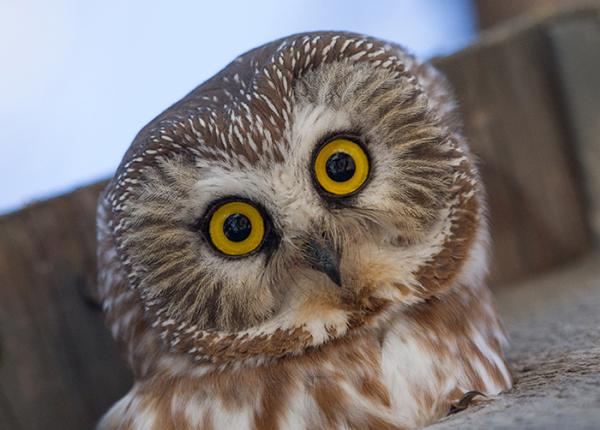From Blackland Prairie Raptor Center
Nose Job? This Eastern Screech Owl came to our Rehab Center with some blood above its cere. The cere is a waxy fleshy covering above a bird’s beak just below the eyes, where the nostrils (nares) are located. The owl is patiently sitting while our staff cleans the cere.


Random facts incoming.
It is named Wachshaut in german because it looks… waxy. It describes the featherless part at the base of the upper part of the beak and:
https://en.m.wikipedia.org/wiki/Beak#Cere
Huh, built-in scales. :)
Btw: Beaks!
That is fascinating. Owls for the win again!
You had me excited to read about this all day, but I was traveling and couldn’t get to it until now.
I read the study paper and for the most part there wasn’t too much more to it than what you said, but then the conclusion has me a little confused.
So if it’s not a coloration difference, does that mean they are just seeing a brighter type of grey (greater amplitude) or are they seeing something else?
I’d like to learn more about their UV seeing abilities, but I feel in over my head. I feel this paper is pretty jargon heavy.
Very interesting stuff though!
I don’t know. My knowledge stems from my biology classes at school and what my parents told me. And that was some time ago. :) I didn’t know the word cere, so I looked it up and found the UV part about owls and felt the urge to share it. I didn’t look into that study until now.
I’d like to know more too, but I don’t think I have the energy to pull through if I’d dive into that rabbit hole. So I won’t try. :)
The authors state: Rods are responsible for the gray scale scotopic vision under low light conditions - so grey scale brightness, only. The cones are not relevant because it is too dark. Or are they? There are those oily cones which maybe can detect UV light? If so: still no colors, just brightness. To me it looks like the authors of the study offered some educated guesses.
I would say it means: Either it is greyscale brightness but maybe it is something else. But the authors don’t know. They just know that the owl perceived the difference.
It looks like the owl’s eyeball doesn’t absorb the upper range of UV-light (350nm+) so it could reach the owls receptor cells: https://journals.biologists.com/jeb/article/224/20/jeb243129/272645/Lens-and-cornea-limit-UV-vision-of-birds-a
I didn’t find anything about that secondary (beta) peak that I could understand - maybe it is about the biochemistry in the rod/cone which can be split into phases when light hits the cell. I’m lost here. The google-LLM pointed me here: https://pmc.ncbi.nlm.nih.gov/articles/PMC3265844/ I’m not even sure, if this is a match for our context.
Lol sorry, I knew I should have been more specific I was just questioning in general, not asking you specifically to answer! 😁
At least we sound like we’ve understood it in pretty similar ways.
No worries. I wouldn’t have looked into it, if I wasn’t interested.:)